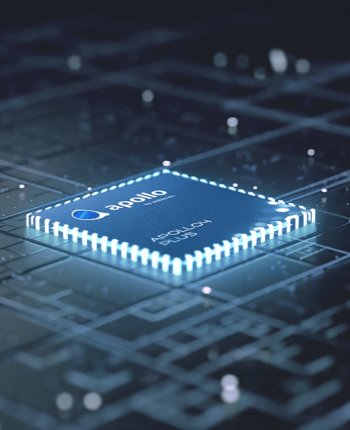
Prompt: A Samoyed plus a Golden Retriever Puppy are playfully romping by way of a futuristic neon city at night. The neon lights emitted in the close by properties glistens off in their fur.
We represent video clips and pictures as collections of more compact models of information termed patches, Each and every of which happens to be akin into a token in GPT.
The creature stops to interact playfully with a group of little, fairy-like beings dancing all around a mushroom ring. The creature seems up in awe at a big, glowing tree that seems to be the guts of the forest.
Most generative models have this basic setup, but differ in the details. Listed here are three popular examples of generative model strategies to provide you with a sense from the variation:
Serious applications almost never have to printf, but this can be a frequent operation although a model is currently being development and debugged.
Just like a bunch of experts might have encouraged you. That’s what Random Forest is—a set of determination trees.
Generative Adversarial Networks are a comparatively new model (released only two years back) and we expect to check out extra immediate development in even more strengthening the stability of these models during training.
Prompt: Archeologists uncover a generic plastic chair during the desert, excavating and dusting it with good care.
Generative models undoubtedly are a speedily advancing spot of analysis. As we carry on to advance these models and scale up the schooling as well as datasets, we could count on to at some point generate samples that depict solely plausible illustrations or photos or movies. This will by alone come across use in a number of applications, like on-demand from customers produced art, or Photoshop++ instructions for example “make my smile wider”.
The “best” language model modifications with reference to distinct responsibilities and disorders. In my update of September 2021, a few of the greatest-acknowledged and strongest LMs include things like GPT-three made by OpenAI.
more Prompt: Drone check out of waves crashing from the rugged cliffs together Large Sur’s garay level Seashore. The crashing blue waters build white-tipped waves, whilst the golden mild on the location Solar illuminates the rocky shore. A small island having a lighthouse sits in the gap, and inexperienced shrubbery handles the cliff’s edge.
Prompt: Several large wooly mammoths tactic treading via a snowy meadow, their long wooly fur lightly blows within the wind because they stroll, snow lined trees and spectacular snow capped mountains in the gap, mid afternoon gentle with wispy clouds and also a Solar superior in the space makes a heat glow, the small digicam view is stunning capturing the large furry mammal with beautiful photography, depth of field.
The Artasie AM1805 analysis board offers an easy method to measure and evaluate Ambiq’s AM18x5 real-time clocks. The evaluation board includes on-chip oscillators to provide minimum power consumption, full RTC capabilities together with battery backup and Smart devices programmable counters and alarms for timer and watchdog capabilities, and also a Laptop serial interface for interaction by using a host controller.
extra Prompt: A Samoyed and also a Golden Retriever Pet dog are playfully romping by way of a futuristic neon city at night. The neon lights emitted from the close by structures glistens off of their fur.
Accelerating the Development of Optimized AI Features with Ambiq’s neuralSPOT
Ambiq’s neuralSPOT® is an open-source AI developer-focused SDK designed for our latest Apollo4 Plus system-on-chip (SoC) family. neuralSPOT provides an on-ramp to the rapid development of AI features for our customers’ AI applications and products. Included with neuralSPOT are Ambiq-optimized libraries, tools, and examples to help jumpstart AI-focused applications.
UNDERSTANDING NEURALSPOT VIA THE BASIC TENSORFLOW EXAMPLE
Often, the best way to ramp up on a new software library is through a comprehensive example – this is why neuralSPOt includes basic_tf_stub, an illustrative example that leverages many of neuralSPOT’s features.
In this article, we walk through the example block-by-block, using it as a guide to building AI features using neuralSPOT.
Ambiq's Vice President of Artificial Intelligence, Carlos Morales, went on CNBC Street Signs Asia to discuss the power consumption of AI and trends in endpoint devices.
Since 2010, Ambiq has been a leader in ultra-low power semiconductors that enable endpoint devices with more data-driven and AI-capable features while dropping the energy requirements up to 10X lower. They do this with the patented Subthreshold Power Optimized Technology (SPOT ®) platform.
Computer inferencing is complex, and for endpoint AI to become practical, these devices have to drop from megawatts of power to microwatts. This is where Ambiq has the power to change industries such as healthcare, agriculture, and Industrial IoT.
Ambiq Designs Low-Power for Next Gen Endpoint Devices
Ambiq’s VP of Architecture and Product Planning, Dan Cermak, joins the ipXchange team at CES to discuss how manufacturers can improve their products with ultra-low power. As technology becomes more sophisticated, energy consumption continues to grow. Here Dan outlines how Ambiq stays ahead of the curve by planning for energy requirements 5 years in advance.
Ambiq’s VP of Architecture and Product Planning at Embedded World 2024
Ambiq specializes in ultra-low-power SoC's designed to make intelligent battery-powered endpoint solutions a reality. These days, just about every endpoint device incorporates AI features, including anomaly detection, speech-driven user interfaces, audio event detection and classification, and health monitoring.
Ambiq's ultra low power, high-performance platforms are ideal for implementing this class of AI features, and we at Ambiq are dedicated to making implementation as easy as possible by offering open-source developer-centric toolkits, software libraries, and reference arm mcu models to accelerate AI feature development.

NEURALSPOT - BECAUSE AI IS HARD ENOUGH
neuralSPOT is an AI developer-focused SDK in the true sense of the word: it includes everything you need to get your AI model onto Ambiq’s platform. You’ll find libraries for talking to sensors, managing SoC peripherals, and controlling power and memory configurations, along with tools for easily debugging your model from your laptop or PC, and examples that tie it all together.
Facebook | Linkedin | Twitter | YouTube